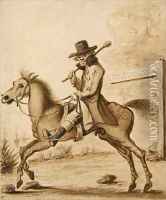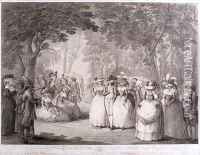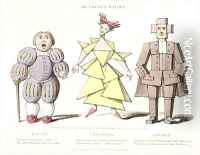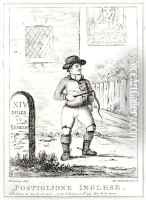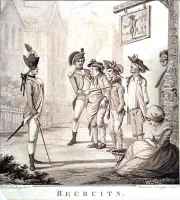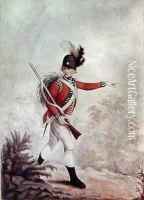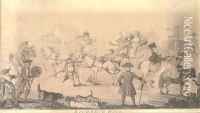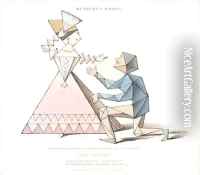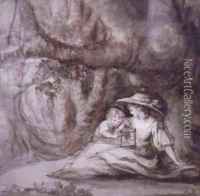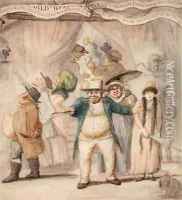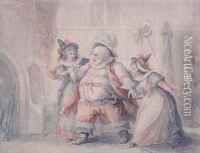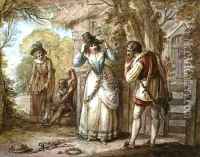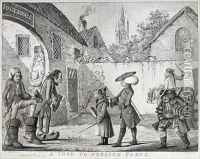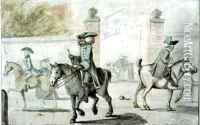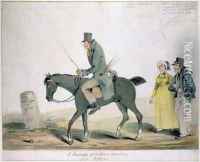Henry William Bunbury Paintings
Henry William Bunbury was a British caricaturist and amateur artist, best known for his humorous and satirical works. Born on February 26, 1750, in Mildenhall, Suffolk, he was the second son of Sir William Bunbury, 5th Baronet, and his wife, Eleanor. He was educated at St Catharine's College, Cambridge, where his talent for drawing and caricature became apparent.
Bunbury achieved fame in his lifetime with his series of prints that offered a whimsical look at contemporary society and manners. These were often published by leading print sellers of the time, such as Hannah Humphrey, who was also the publisher for the famous caricaturist James Gillray. Bunbury's work was less biting than Gillray's, focusing more on light-hearted folly than on political or social criticism.
He married Catherine Horneck in 1771, who was known for her beauty and vivacity. Their marriage provided further social connections that benefited Bunbury's career, as he gained access to influential circles which enjoyed his work. Despite his success as a caricaturist, Bunbury never considered himself a professional artist. He was, instead, a gentleman with artistic leanings, and his works were something of a hobby that brought him considerable recognition.
Throughout his life, Bunbury was also involved in other aspects of country life, including horse racing and the militia. He became Lieutenant-Colonel of the West Suffolk militia in 1798. His love for rural sports and his role in society often influenced the subjects of his art.
Henry William Bunbury's style was characterized by a gentle satirical edge and a focus on the absurdities of upper-class life. His drawings were engraved and widely disseminated, contributing to his popularity across classes. His work includes a number of series, such as 'A Long Minuet as Danced at Bath,' which became extremely popular.
Bunbury died on May 7, 1811, in Kesgrave, Suffolk, and was buried in the family vault in Mildenhall. His legacy persisted as his prints continued to be enjoyed for their humor and insight into 18th-century life. His contribution to British caricature paved the way for later artists, and his work remains an important document of the social and cultural history of his time.
